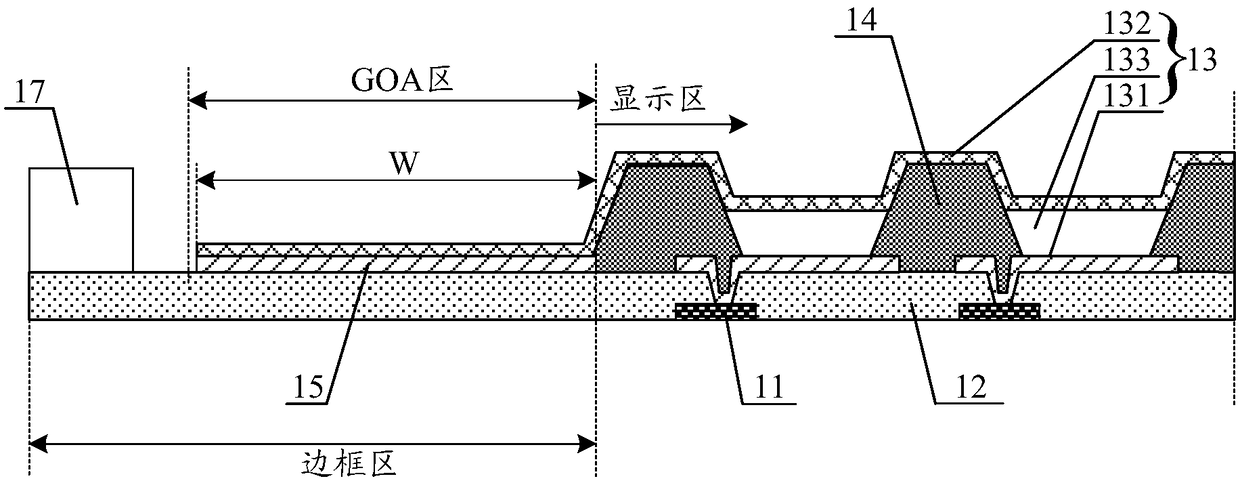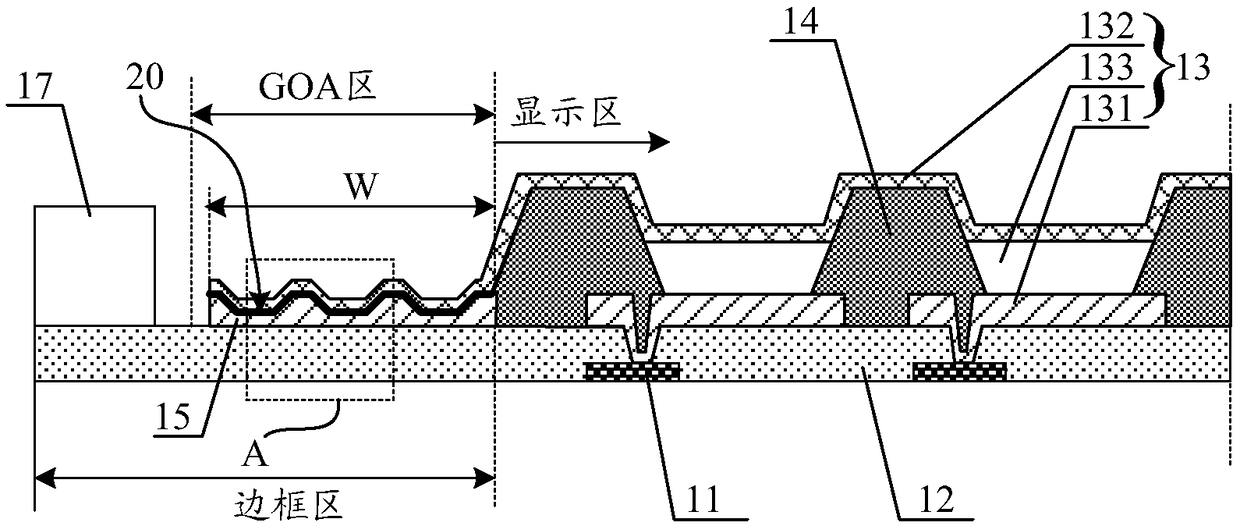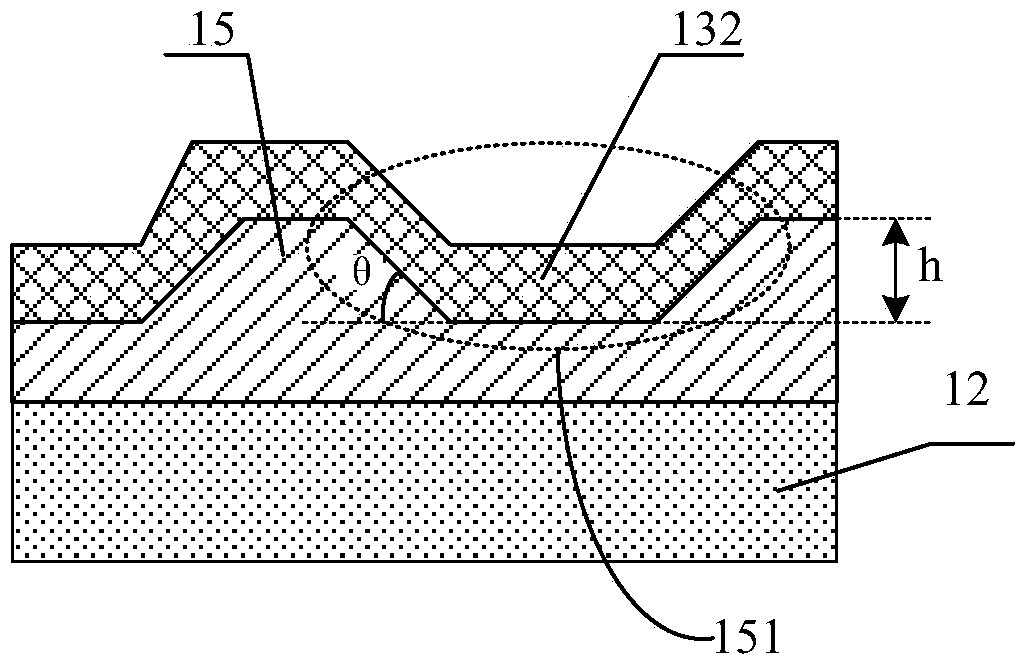OLED substrate and display panel
A substrate and display area technology, applied in the direction of electrical components, electrical solid devices, circuits, etc., can solve the problems of wide panel frame and no obvious competitive advantage, and achieve the goal of increasing the overlapping area, realizing narrow frame design, and narrow frame Effect
- Summary
- Abstract
- Description
- Claims
- Application Information
AI Technical Summary
Problems solved by technology
Method used
Image
Examples
no. 1 example
[0036] figure 2 It is a schematic structural view of the OLED substrate according to the first embodiment of the present invention. From figure 2 It can be seen from the figure that the OLED substrate includes a display area and a frame area located at the periphery of the display area. A gate driver OnArray (GOA) area of the array substrate is disposed in the frame area. The OLED substrate includes a thin film transistor (Thin Film Transistor, TFT) array substrate 12 on which a plurality of TFTs 11 are arrayed. The OLED substrate also includes a plurality of OLED pixels 13 disposed on the TFT array substrate 12 . The OLED pixel area is bounded by the pixel defining layer 14 . The OLED pixel 13 includes an anode 131 , a cathode 132 and an organic light emitting layer 133 disposed between the anode 131 and the cathode 132 .
[0037] From figure 2 It can also be seen that the anode 131 is located between the pixel defining layer 14 and the TFT array substrate 12 , and...
no. 2 example
[0047] Figure 5 It is a schematic structural view of the OLED substrate according to the second embodiment of the present invention. Different from the first embodiment, in this embodiment, if Figure 5 As shown, the OLED substrate further includes a flat layer 16 disposed between the signal wiring layer 15 and the TFT array substrate 12 , and the surface of the flat layer 16 corresponding to the signal wiring layer 15 is concave-convex.
[0048] It is easy to understand that the thickness of the signal wiring layer 15 is usually relatively thin. Therefore, in order to form a bumpy overlapping surface, the thickness of the signal wiring layer 15 needs to be increased, which will lead to waste of materials. On the basis of not increasing the thickness of the signal wiring layer, the uneven overlapping surface is realized. In this embodiment, the surface of the area corresponding to the signal wiring layer 15 of the flat layer 16 is set to be uneven, In this way, when the sig...
no. 3 example
[0050] Figure 6 It is a structural schematic diagram of the overlapping surface of the cathode and the signal wiring layer according to the third embodiment of the present invention. Different from the first embodiment, in this embodiment, if Figure 6 As shown, the overlapping surface of the cathode 132 and the signal wiring layer 15 is wavy. This shape of the overlapping surface can also achieve the purpose of increasing the overlapping length of the cathode and the signal wiring layer, thereby increasing the overlapping area of the cathode and the signal wiring layer, which is conducive to realizing the narrow frame of the OLED display panel.
[0051] It is easy to understand that the overlapping surface of the cathode and the signal wiring layer is not limited to the shape of trapezoidal teeth and waves, as long as the overlapping surface is concave-convex and undulating, the technical effects of the embodiments of the present invention can be achieved.
[0052] It is...
PUM
 Login to View More
Login to View More Abstract
Description
Claims
Application Information
 Login to View More
Login to View More - R&D
- Intellectual Property
- Life Sciences
- Materials
- Tech Scout
- Unparalleled Data Quality
- Higher Quality Content
- 60% Fewer Hallucinations
Browse by: Latest US Patents, China's latest patents, Technical Efficacy Thesaurus, Application Domain, Technology Topic, Popular Technical Reports.
© 2025 PatSnap. All rights reserved.Legal|Privacy policy|Modern Slavery Act Transparency Statement|Sitemap|About US| Contact US: help@patsnap.com



